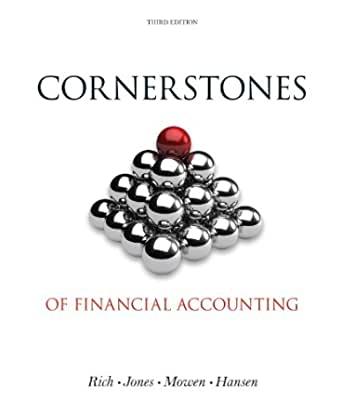Question
I should elaborate responds for each of the next posts. One decent paragraph will be enough. You can add personal opinions or simply comment the
I should elaborate responds for each of the next posts. One decent paragraph will be enough.
You can add personal opinions or simply comment the post through some references/sources. In this case you should do citations.
1st post:
Standard cost accounting is a traditional cost accounting method introduced in the 1920s. It is an alternative for the traditional cost accounting method based on historical costs. It is the practice of substituting an expected cost for an actual cost in the accounting records.
In accounting, a standard costing system is a tool for planning budgets, managing and controlling costs, and evaluating cost management performance. A standard costing system involves estimating the required costs of a production process.
A standard cost is described as a predetermined cost, an estimated future cost, an expected cost, a budgeted unit cost, a forecast cost, or as the "should be" cost. Standard costs are often an integral part of a manufacturer's annual profit plan and operating budgets.
Since standard costs are usually slightly different from actual costs, the cost accountant periodically calculates variances that break out differences caused by such factors as labor rate changes and the cost of materials. The cost accountant may periodically change the standard costs to bring them into closer alignment with actual costs.
When standard costs are used in a manufacturing setting, a product's standard cost for a future accounting period will consist of the following:
Direct materials: a standard quantity of each material and a standard cost per unit of material
Direct labor: a standard quantity of labor and a standard cost per hour of labor
Manufacturing overhead: a budget for the fixed overhead, the standard variable overhead rate, and the standard quantity for applying a fixed and variable overhead rates.
2nd post:
A standard cost is described as a predetermined cost, an estimated future cost, an expected cost, a budgeted unit cost, a forecast cost, or as the "should be" cost. Standard costs are often an integral part of a manufacturer's annual profit plan and operating budgets ("Accouting coach", n.d.). the standard-cost method determines advantages for the small economic entity analyzed, such as the anticipation of the costs of the programmed production; the expectation of scheduled production costs; the value of deviations from the standard cost, by cost categories and by product categories; efficient monthly control of the real cost of production, etc. (IONESCU, et al., 2020).
Cost standard = standard cost per unit product = standard consumption per unit product * standard unit price
Standard cost = actual output * standard cost per unit product
The standard cost method is suitable for mass production enterprises with a small variety of products, while it is less used for single-piece and small-volume enterprises.
Step by Step Solution
There are 3 Steps involved in it
Step: 1

Get Instant Access to Expert-Tailored Solutions
See step-by-step solutions with expert insights and AI powered tools for academic success
Step: 2

Step: 3

Ace Your Homework with AI
Get the answers you need in no time with our AI-driven, step-by-step assistance
Get Started


